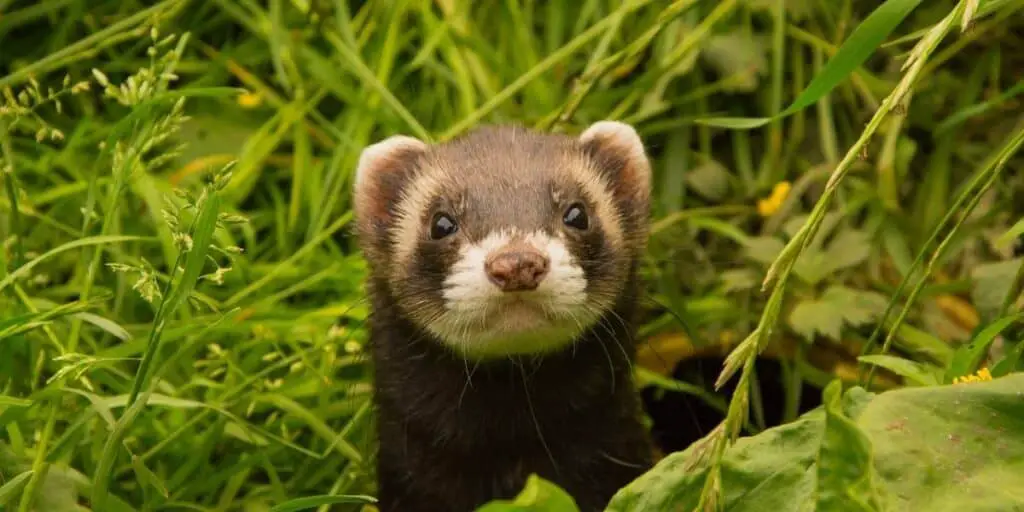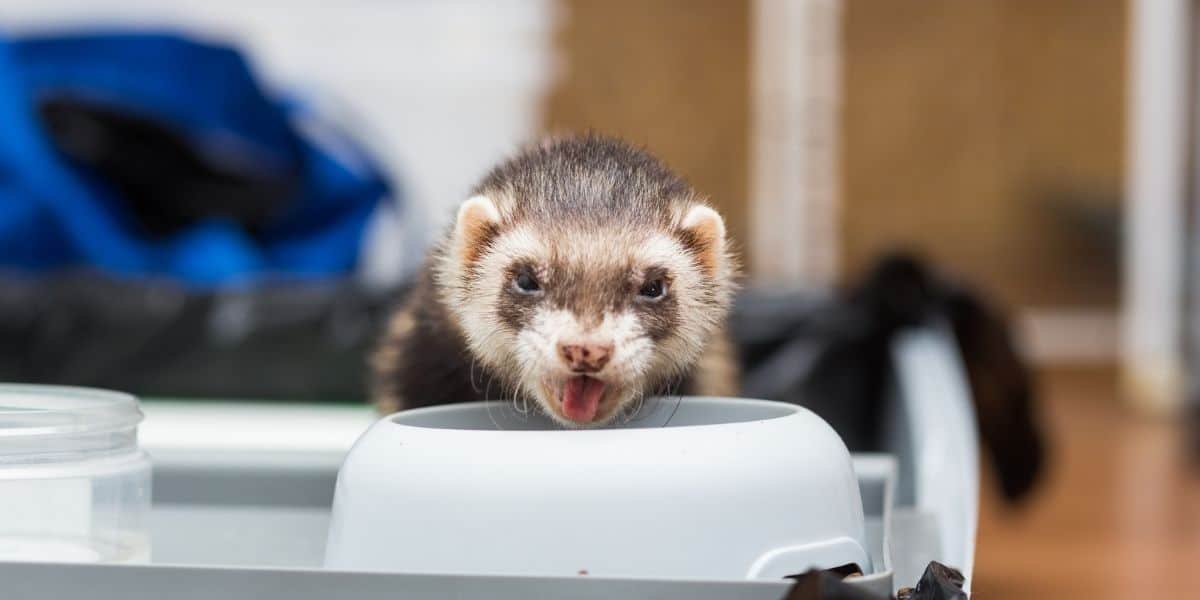It can be hard to recognize a steely and ruthlessly efficient predator when you look at your pet ferret, but your mischievous and playful furry friend is not so far removed from its wild relatives.
A key area in which ferrets retain the need to exercise their natural and authentic behaviors is their diet.
Having an understanding of what ferrets eat in the wild will guide you in providing the correct diet to your ferret and offering foods that will be natural to your pet.
This short article will not only answer the question of “What do ferrets eat in the wild?”, but also provide you with pointers for how you can replicate it with nutritionally balanced foods for a domesticated ferret.
Table of Contents
Wild ferrets are true carnivores.
In the wild, ferrets eat an entirely carnivorous diet of small prey. As they are opportunistic predators the range of prey they hunt can be broad. Typical animals hunted, killed, and eaten by ferrets in the wild include:
- Rabbits
- Susliks
- Ground squirrels
- Voles
- Shrews
- Mice
- Turtles
- Rates
- Chickens
- Hedgehogs
- Snakes
- Possums
- Squirrels
- Prairie dogs
- Birds
Prey animals eaten by a wild ferret are consumed in their entirety, including flesh, bones, internal organs, and any feathers and fur.
Wild ferrets not only eat meat but need to eat all the time.
Ferrets have a very high metabolism which means they must eat often. Their digestive tract is short and unable to process plant matter.
To satisfy their needs, these obligate carnivores are adept hunters, with slender bodies that can pursue prey efficiently down holes and through hedges.

Their keen hunting abilities led to them being used by man to hunt rabbits, a pastime called ferreting that continues today.
These creatures are built to kill and dismember their prey quickly and efficiently. Amongst their teeth, four canines are used to kill prey, and premolars and molars cut up and crush down the entire prey, including bone.
Domestication has not altered the carnivorous diet of the ferret.
As a ferret owner, you need to know that your ferret requires frequent fleshy, meaty meals as much as its wild counterpart. Understanding of the dietary needs of ferrets has changed significantly in recent times.
Previously it was believed that ferrets could tolerate a diet that included fruit and carbohydrates, but it is now recognized that such foods are harmful to ferrets.
Even where a meat-based food like cat food is provided to ferrets there may be digestive issues as additives in the processed meat can sensitize the ferret’s bowels.
You also need to consider how ferrets feed. In the wild these animals are crepuscular, making nighttime the period where they hunt and eat. Due to their metabolic demands, ferrets will eat freely and opportunistically. This means that food and water should be continually available to them.
You need to recognize your ferret’s need for raw meat.
According to the Australian Royal Society for the Protection of Animals, ferret’s need an extremely high protein diet that is rich in meat and animal products.
Fresh mince, offal, and meat bones, as well as diced beef and lamb, should be regularly offered to ferrets. A meaty diet like this is not only expensive but may be difficult to make continually available as ferrets need access to their food and water at all times.
For this reason, many ferrets are weaned onto protein-rich dry foods or kitten foods. Dry nutritionally balanced ferret food is also available, but fresh meat is always best.
Bones should be no more than 10% of the diet but are important for keeping the ferret’s teeth clean. Raw meat bones are also great for satisfying a pet ferret’s urge to chew.
Some owners offer their ferrets live or defrosted mice as a treat but these should not form part of their regular diet.
Food imprinting means that you need to make an effort to establish a varied diet for your ferret.
Like many animals, ferrets go through a period of dietary imprinting at a young age. By six months they become fixed on a particular diet making it difficult to get established on alternate foods.
Owners of young ferrets should therefore offer a very varied diet to their ferret early on before the critical imprinting period has passed.
Rounding up
Ferrets have only been kept as pets in significant numbers since the 1980s and still remain a relatively exotic pet. This means there is still a lot to learn about how to provide these characterful creatures with the diet needed to support them to thrive.
What is now known is that your pet ferret will benefit from a considered diet that is guided by the wild ferret’s diet of hunted meats.




